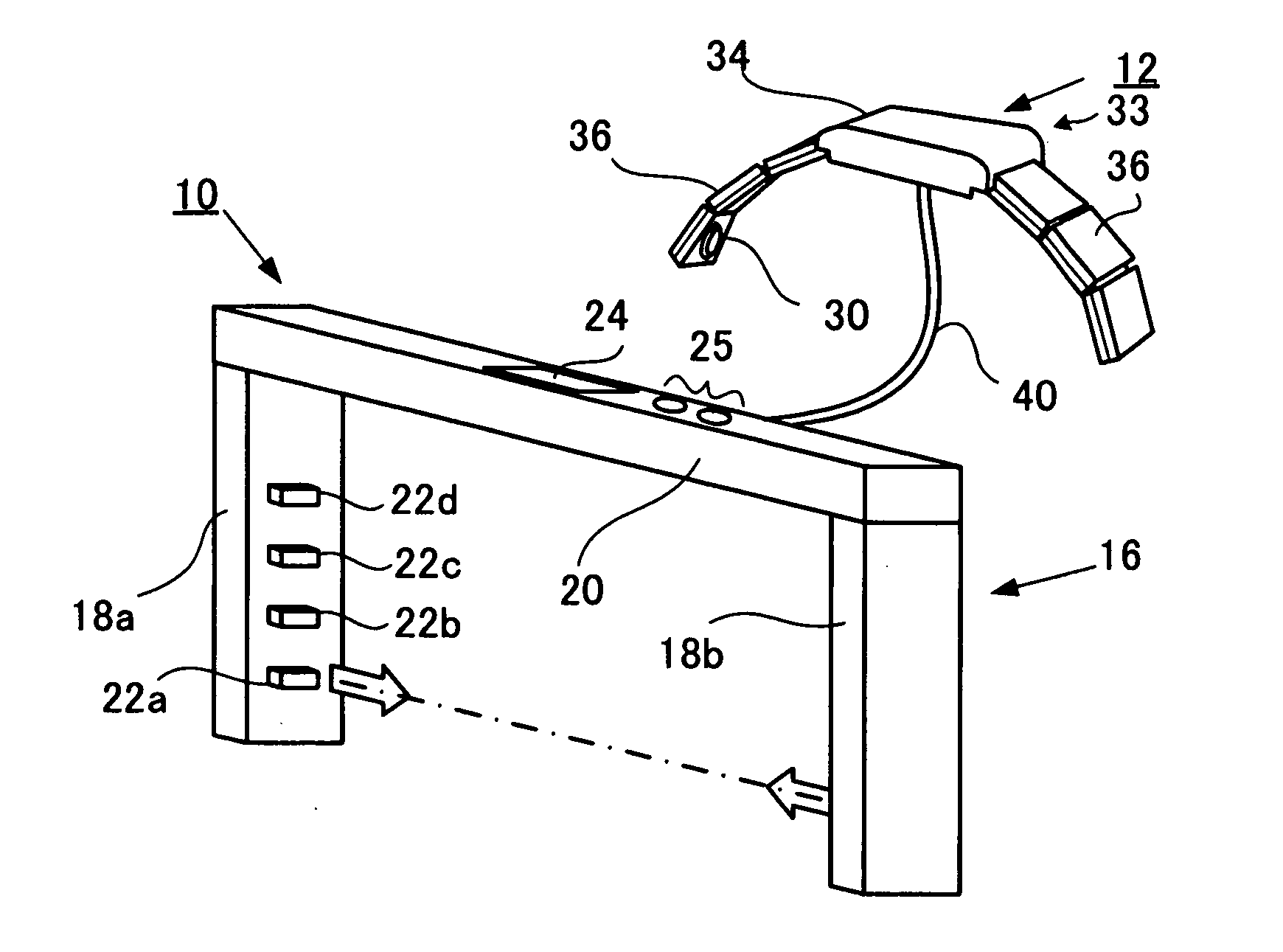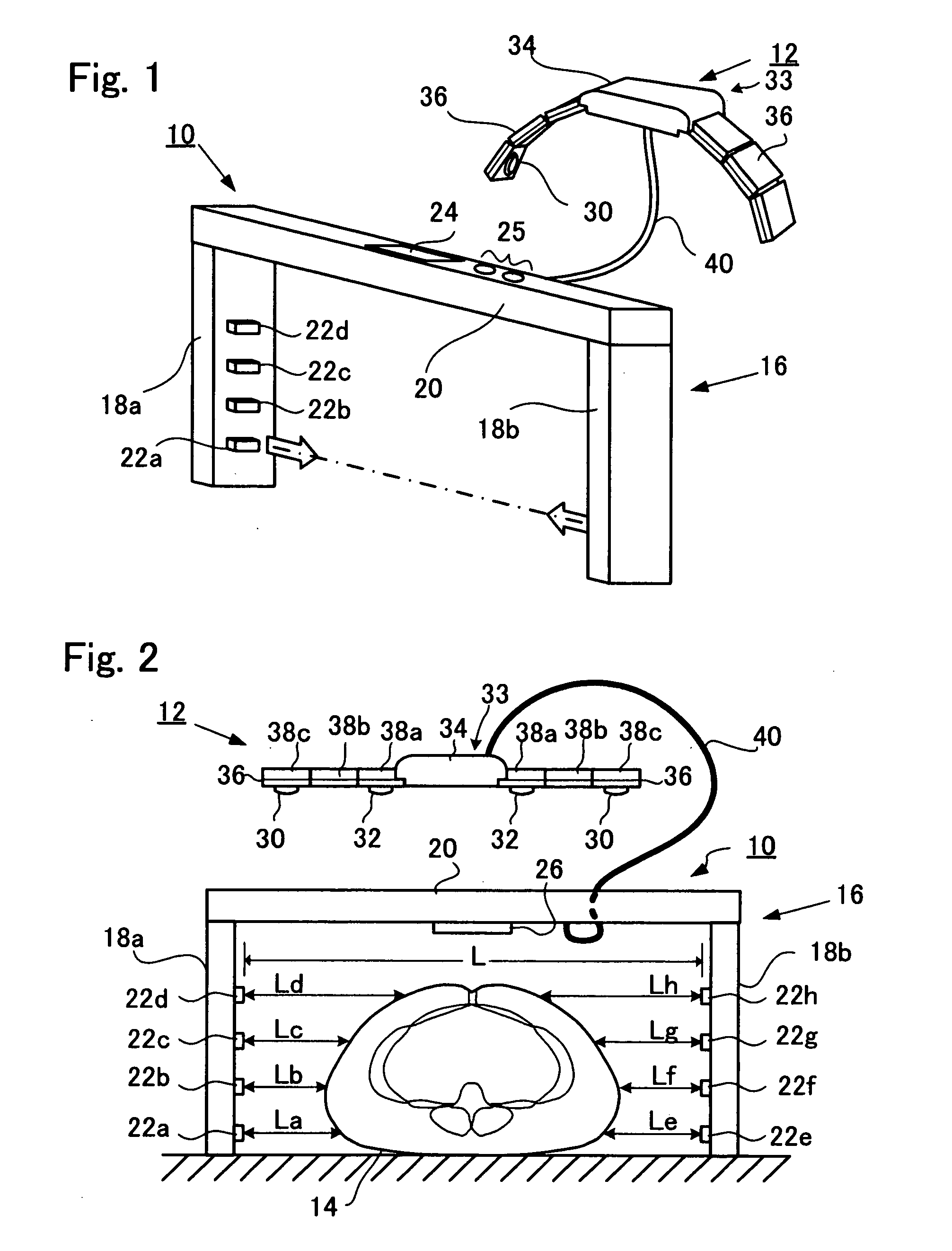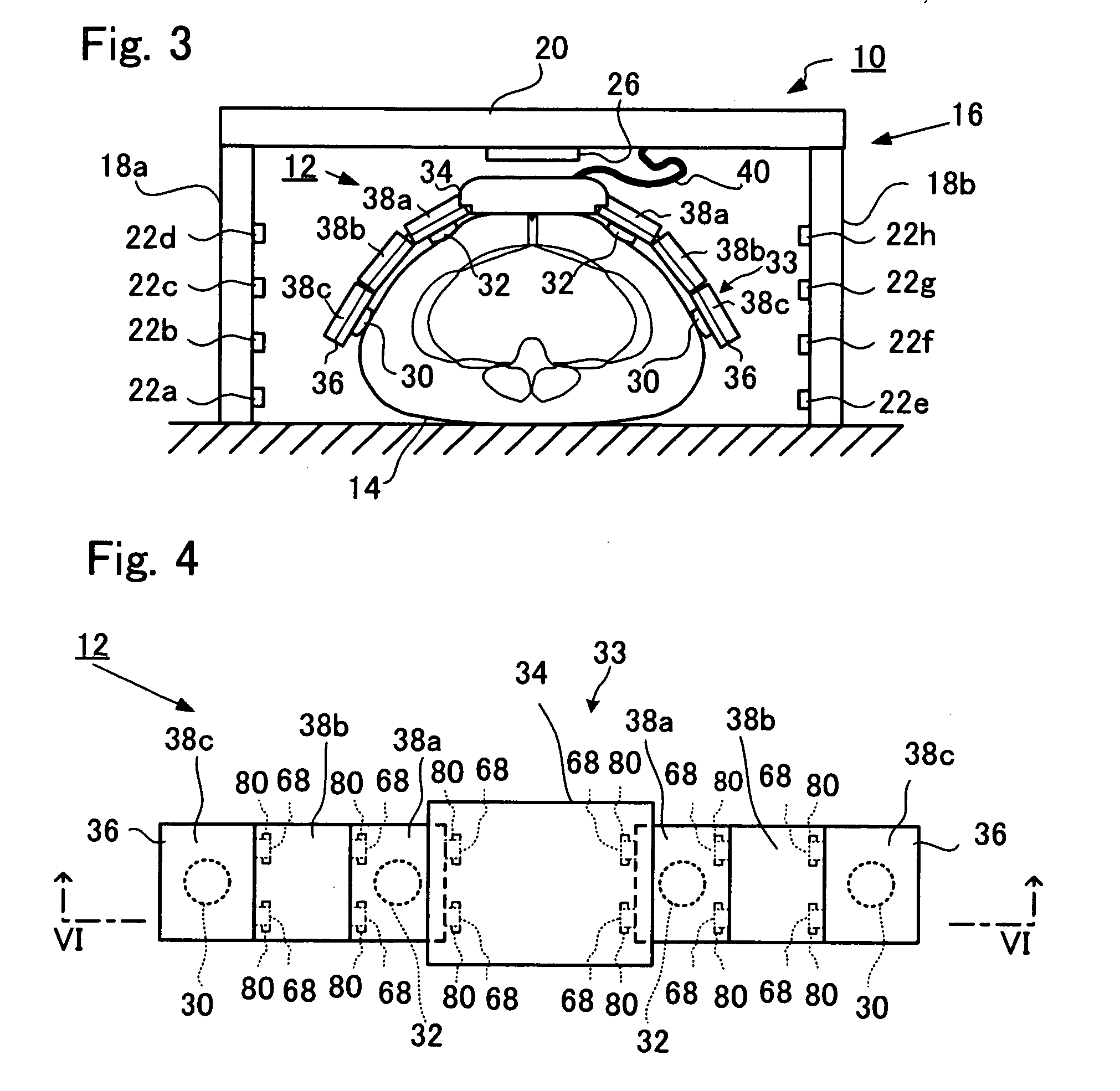Abdominal impedance measurement apparatus
a technology of impedance measurement and abdominal belt, which is applied in the field of abdominal belt impedance measurement apparatus, can solve the problems of inconvenient winding of the belt around the abdomen, inconvenient use, and inability to arrange the impedance measurement electrodes at such reference positions, and achieves a high degree of reproducibility and convenient arrangemen
- Summary
- Abstract
- Description
- Claims
- Application Information
AI Technical Summary
Benefits of technology
Problems solved by technology
Method used
Image
Examples
Embodiment Construction
[0028]With reference to the accompanying drawings, an embodiment according to the present invention will be described hereinafter. In the drawings, scales of lengths may differ from those in an actual product.
[0029]FIG. 1 is a perspective view of a body composition determination apparatus according to an embodiment of the present invention, and FIG. 2 is a front view of the body composition determination apparatus. The body composition determination apparatus includes an abdominal width determination apparatus 10 and an impedance measuring unit 12. As will be described later, the abdominal impedance measurement apparatus according to the embodiment includes some parts of the abdominal width determination apparatus 10 and the entirety of the impedance-measuring unit 12.
[0030]As shown in FIG. 2, the abdominal width determination apparatus 10 includes a casing (housing), i.e., a frame 16, in the inside of which a human being, i.e., a human subject 14, may be positioned. The frame 16 is...
PUM
 Login to View More
Login to View More Abstract
Description
Claims
Application Information
 Login to View More
Login to View More - R&D
- Intellectual Property
- Life Sciences
- Materials
- Tech Scout
- Unparalleled Data Quality
- Higher Quality Content
- 60% Fewer Hallucinations
Browse by: Latest US Patents, China's latest patents, Technical Efficacy Thesaurus, Application Domain, Technology Topic, Popular Technical Reports.
© 2025 PatSnap. All rights reserved.Legal|Privacy policy|Modern Slavery Act Transparency Statement|Sitemap|About US| Contact US: help@patsnap.com



